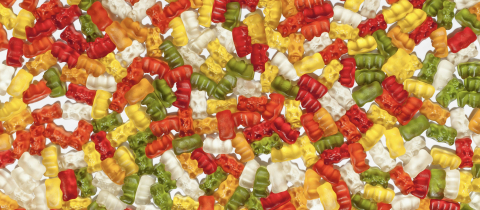They feast on croissants that ooze butter. They eat creamy cheeses and fat-filled pastries. Breakfast is pain-au-chocolat washed down with espresso. There is no oatmeal in sight. I suspect most of them have never heard of flaxseed. Yet, the French have the lowest death rate from heart disease in the European Union, and when we compare this rate to North America, well, there is no comparison. Our incidence of heart disease is double that of the French. Red wine consumption is the romanticized explanation that has been offered for this so-called “French paradox,” and there may indeed be something to that. Laboratory studies have shown that a compound in wine, called resveratrol, may reduce the risk associated with high cholesterol. But there is probably a better explanation as to why the French are protected. They just eat less than we do! Their caloric consumption is less and their obesity rate is only about 7%. Compare that with Americans, a third of whom can be ranked as significantly overweight.
Animal studies have repeatedly shown that reduced calorie intake correlates with longevity. And now thanks to an investigation by Dr. Paul Rozin of the University of Pennsylvania, perhaps we can extend this idea to the French. Rozin and associates compared portion sizes in France and the US and came up with some pretty dramatic findings. They actually weighed servings in eleven comparable pairs of eateries in Paris and Philadelphia. These ran the gamut of pizzerias, fast food outlets and ethnic restaurants. The average portion size in the Paris restaurants was 277 grams as compared with 346 grams in Philly. That is a 25% difference! The American Chinese meals were a stunning 72% heftier than those served in the Parisian Chinese restaurants. Rozin also found that supermarket portions were larger in the U.S. An American candy bar was 41% larger, a hot dog was 63% bigger and even single yogurt servings were much larger. It seems that the old adage, “only the dose makes the poison,” applies to food as well.
Then there was another finding. The French don’t wolf down their meals, they take their time. Even at fast food joints, like MacDonald’s, they take longer to eat their burgers and fries. Goodness knows why. Americans spend 14 minutes “enjoying” their fast food while the French linger for some 22 minutes. In total, an average American spends an hour a day eating while a French person eats for some one hundred minutes. It seems the French eat less and enjoy it more. They don’t eat at their desks and they don’t eat on the run. And according to statistics, they may enjoy their food for more years. So it pays to take time out and eat in a relaxing atmosphere. Not everything in France, though, is smaller than here. An average French toilet paper square is larger than an American one. But I doubt that toilet paper size is linked to longevity. And remember that one slice of pizza has half as many calories as two slices.







